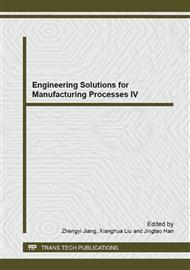p.947
p.951
p.958
p.962
p.970
p.978
p.982
p.987
p.994
Research on Modeling and Parameter Identification of Electro-Hydraulic Servo Loading System
Abstract:
In order to improve the mathematical models accuracy of the electro-hydraulic servo loading system from the high-speed motorized spindle reliability test bench. This paper establishes the mathematical model based on the dynamic characteristics of the test bench, then establishes discrete mathematical model of the system based on the Z-transform, and finally uses particle swarm optimization (PSO) algorithm to identify the parameters of the discrete model. Additionally, the least square method is applied to identify the parameters of the model for measuring the PSO algorithm parameter identification capability in our paper. The experimental results show that the mathematical model, identified by the PSO algorithm, can simulate the loading process very well under the strong interference signals, and the result is better than that gotten by the least square method, which proves that the PSO algorithm has high identification accuracy and better capability in parameters identification .
Info:
Periodical:
Pages:
970-977
Citation:
Online since:
February 2014
Authors:
Price:
Сopyright:
© 2014 Trans Tech Publications Ltd. All Rights Reserved
Share:
Citation:


